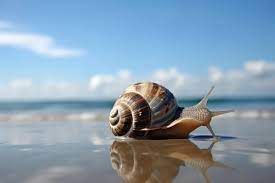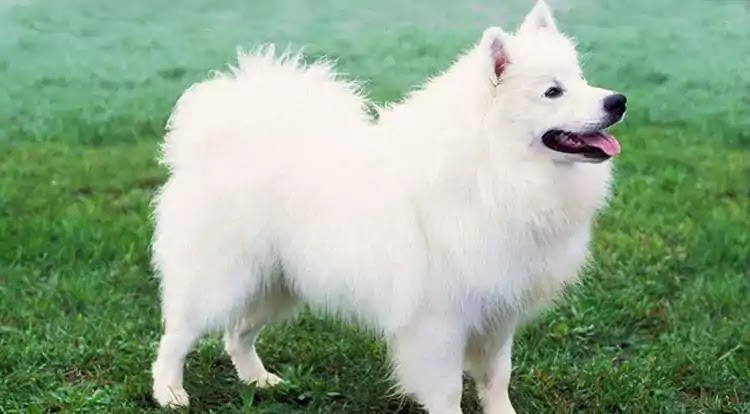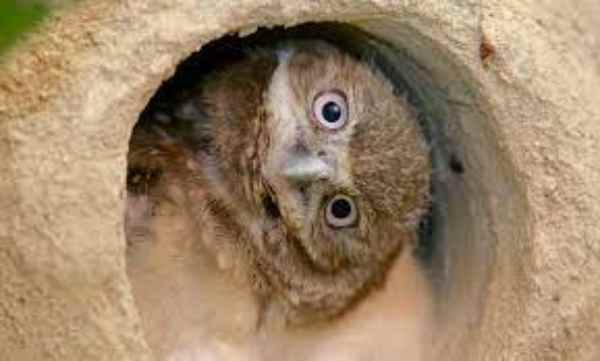Nature has an astonishing way of manifesting beauty and design through various forms and patterns. The spiral, an elegant and intricate geometric shape, is a phenomenon that finds its way into the animal kingdom, adorning the bodies and shells of diverse creatures.
From the mesmerizing spirals of seashells and the hypnotic patterns on certain insect wings to the unique and artistic helix-shaped structures that animals possess, the world of “Spiral Animals” is a captivating exploration of biological artistry.
In this article, we embark on a journey through this fascinating realm, discovering the purpose, symbolism, and evolutionary marvels behind spirals in the animal world. Join us as we unravel the secrets of these spiral wonders, showcasing the diverse range of creatures that exhibit this extraordinary design and delving into the science and stories that make these spiral formations a true marvel of nature.
Table of Contents
Spirals in Animal Shells:
Spirals in animal shells are a remarkable example of nature’s inherent geometric beauty. Various marine creatures, such as snails and ammonites, adorn themselves with intricately coiled shells, embodying the spiral form. These spirals serve crucial purposes, providing protection, stability, and buoyancy to the animal. The growth pattern of the shell, following a logarithmic spiral, allows for efficient and proportional growth as the animal matures.
The Fibonacci sequence often underpins these spirals, showcasing the mathematical elegance found in nature. As the animal outgrows its existing shell, it adds new chambers, each in a spiral arrangement, reflecting a perfect blend of mathematical precision and biological functionality.
Snails (Gastropoda):

Snails, belonging to the Gastropoda class, are iconic examples of spiral creatures in the animal kingdom. Their exquisite spiral-shaped shells are a testament to nature’s mathematical precision and biological functionality. These shells, intricately coiled and expanding in a logarithmic spiral, provide not only protection but also aid in buoyancy and efficient movement.
The Fibonacci sequence often underlies their growth, showcasing the mathematical elegance inherent in their biology. From the common garden snail to marine snails, their shells exhibit an astonishing variety of colors, textures, and patterns, captivating the observer and highlighting the beauty of the spiral form in the animal world.
Nautilus (Cephalopoda):

The nautilus, a cephalopod mollusk, epitomizes the spiral form in marine life. The nautilus shell, unlike its counterparts in squids and octopuses, remains a prime example of a coiled shell in contemporary oceans. Its spiral structure consists of gas-filled chambers that allow for buoyancy control and efficient movement in the ocean’s depths.
The elegance and design of the nautilus shell, resembling a logarithmic spiral, showcase the perfect marriage of mathematical precision and biological adaptation. Despite changes in the Earth’s oceans over millions of years, the nautilus has maintained its unique spiral shell, serving as a living fossil and a reminder of the ancient beauty embedded within the spiral patterns of marine life.
Spiral Body Patterns and Features:
Spiral body patterns and features in animals are fascinating manifestations of evolutionary adaptation and functionality. Some animals, like certain mollusks and insects, display spiral body patterns in their antennae, eyes, or body segments. These spirals often enhance sensory perception or serve specific functions in their locomotion.
Additionally, creatures like the elephant’s tusks exhibit a helical growth pattern, showcasing nature’s diverse application of spirals. Whether it’s the coiling of a snake’s body or the spiraling tusks of narwhals, these features are a testament to the intrinsic beauty and functional design found in the animal kingdom.
Tusks and Horns:

Tusks and horns found in various animals often exhibit spiral growth patterns, adding to their aesthetic appeal and functionality. Creatures like elephants, narwhals, and some species of wild boars possess tusks that grow in a spiral shape. These spirals not only enhance their visual beauty but also serve vital purposes such as defense, foraging, or attracting mates.
The helical growth of tusks and horns showcases nature’s design precision, as these structures can be incredibly long while maintaining structural integrity. The spiral growth allows for efficient utilization and distribution of materials, emphasizing the seamless blend of form and function in the animal kingdom.
Coiled Tails:

Certain animals possess coiled tails, another example of the prevalence of spirals in nature. This unique characteristic can be observed in various creatures, including certain dog breeds, pigs, and seahorses. The coiled tail, often seen as a curled or spiral shape, contributes to their balance, agility, and expression of emotions.
For instance, a wagging, coiled tail in dogs can indicate excitement or happiness. These spiral forms in tails highlight the evolutionary adaptations that aid animals in their locomotion, communication, and overall well-being, showcasing the widespread influence and significance of spiral patterns in the animal world.
Spiral Nests and Burrows:
Spiral nests and burrows crafted by animals provide a testament to their architectural prowess and innate instincts. Animals like bowerbirds and certain rodents construct nests using spiral patterns, incorporating leaves, twigs, and other materials to create intricately designed shelters.
These spirals not only enhance structural stability but also contribute to efficient insulation and protection for offspring. Furthermore, spiral burrows, often seen in insects like the trapdoor spider, serve as ingenious traps, allowing them to capture prey effectively.
Mollusk Nests:

Mollusks, the diverse phylum of invertebrates, often create nests or egg capsules with spiral characteristics. These nests, intricately designed and coiled, provide protection and a secure environment for eggs and larvae.
Mollusks like moon snails construct sand collars, which are spiral-shaped egg capsules containing hundreds of eggs. The spiral structure of these nests optimizes space and provides a level of defense against predators. This natural architectural marvel reflects the adaptability and resourcefulness of mollusks, utilizing spiral patterns to ensure the survival and propagation of their species.
Insect Nests and Burrows:

Insects, with their varied habitats and behaviors, also demonstrate the application of spirals in their nests and burrows. Bees, for example, construct their hives with hexagonal cells, showcasing a tessellating spiral pattern. Additionally, certain insects like trapdoor spiders create burrows with spiral-shaped entrances, providing a unique twist to their architectural prowess.
These spiral nests and burrows not only exhibit mathematical precision but also serve essential functions, such as housing and protection. The application of spirals in their constructions reflects the intricacies of nature’s designs and highlights the diverse ways in which animals utilize geometry for survival and efficiency.
Spiral Patterning in Animal Markings and Fur:
Spiral patterning in animal markings and fur adds a captivating dimension to the diverse array of visual designs found in nature. Various animals, such as seashells, snakes, and big cats like leopards, display spiral-like patterns on their skin, fur, or scales. These patterns not only provide camouflage and aid in hunting but also contribute to their overall aesthetics. The spirals in their markings represent a blend of functional adaptation and artistic beauty, showcasing nature’s ability to marry form and function seamlessly.
Coat Patterns:
Animals often exhibit captivating spiral patterns in their fur, feathers, or skin, adding to their allure and beauty. Various creatures, from big cats like leopards to mollusks like the chambered nautilus, showcase spiral-like coat markings. These patterns, aside from their aesthetic appeal, often serve functional purposes such as camouflage, temperature regulation, or signaling.
The incorporation of spirals into coat patterns showcases nature’s artistic elegance, illustrating how form and function converge to create visually striking and biologically advantageous designs in the animal kingdom.
Shell and Skin Patterns:
Spiral patterns in animal shells and skin are a visual testament to nature’s geometric artistry. Whether it’s the mesmerizing patterns on a seashell or the intricate designs on a snake’s skin, spirals manifest in various forms across the animal kingdom. Mollusks often boast shells adorned with spirals, serving as both protection and a display of natural beauty.
Snakes, with their captivating scale patterns that sometimes exhibit a spiral-like arrangement, showcase the versatility and aesthetic appeal of spirals in skin markings. These patterns not only enhance the animal’s appearance but also provide camouflage or distinctive markings for identification, underscoring the intricate relationship between form, function, and visual artistry in the animal world.
Artistic and Symbolic Representations of Spirals in Animals:
Beyond the biological realm, spirals hold symbolic and artistic significance. In ancient cultures, spirals have been revered as symbols of life, growth, and perpetual motion. They are often associated with cosmic energy, cycles of life and death, and the interconnectedness of all things.
Animal-inspired spirals have found their way into art, representing the essence of the natural world and the symbiotic relationship between humans and animals. The elegance and beauty of the spiral shape continue to inspire artists, designers, and creators across various cultures, transcending biological representation to become a timeless symbol of harmony and balance.
Final Words:
The world of spiral animals showcases the captivating union of art, mathematics, and biology. From the mesmerizing spirals in seashells to the symbolic representations found in ancient cultures, spirals in the animal kingdom embody both functional perfection and profound symbolism.
Nature’s penchant for spirals is a testament to the intricate design that underlies life forms. As we unravel the mysteries and marvels of spiral animals, we are reminded of the extraordinary beauty and harmonious geometry that defines the very fabric of our natural world.
Reference:
- https://www.scienceworld.ca/stories/patterns-nature-where-spot-spirals/
- https://study.com/learn/lesson/pattern-nature-repeating-mathematical-animal.html
- https://maa.org/sites/default/files/images/upload_library/23/picado/seashells/espiraleng.html

Rahul M Suresh
Visiting the Zoo can be an exciting and educational experience for all involved. As a guide, I have the privilege of helping students and visitors alike to appreciate these animals in their natural habitat as well as introducing them to the various aspects of zoo life. I provide detailed information about the individual animals and their habitats, giving visitors an opportunity to understand each one more fully and appreciate them in a more intimate way.









